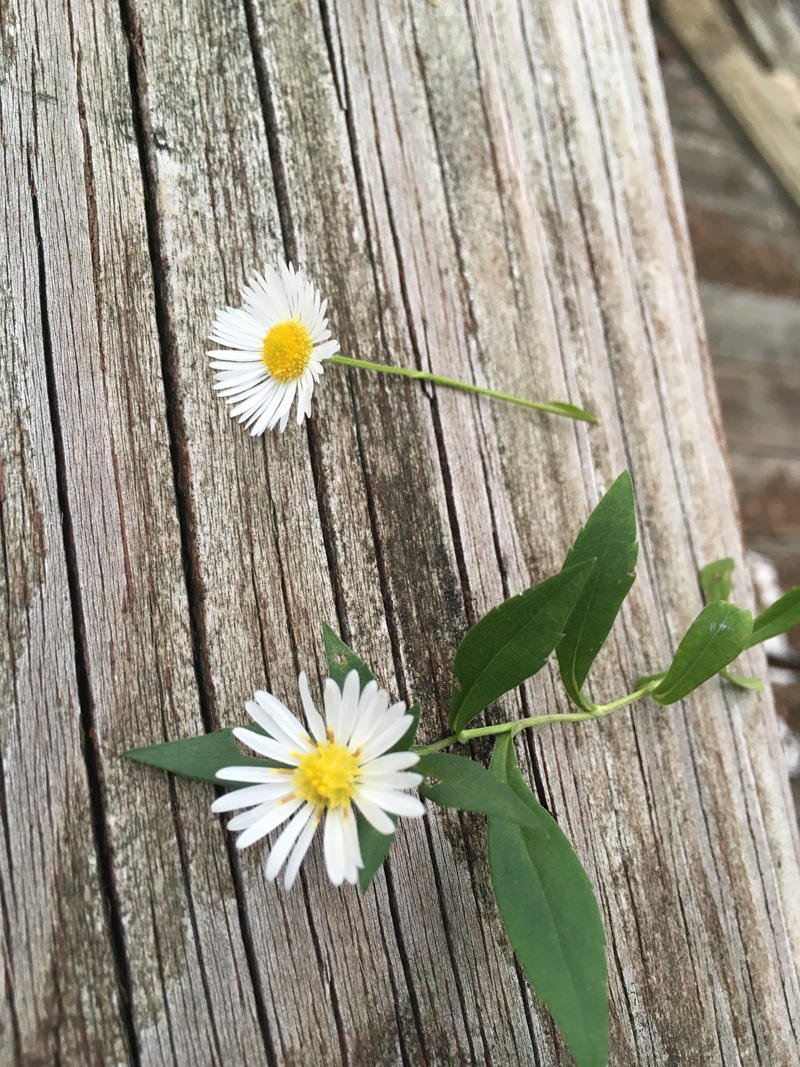Many a summer wildflower bears in its name a lingering legacy of another time: for one, the dainty and prolific Daisy Fleabane.
Part of a group of plants that share the name fleabane, it was once widely believed that their dried leaves and flowers would repel household pests, particularly fleas, when stuffed into the then-common straw mattress or simply hung about the home.
One chilly September day I was walking with another across a rambling heath, gathering wildflowers, I with clippers and she with a jar of water. “Daisy Fleabane”, she confidently declared, as I turned to where she pointed. I said, skeptically, “Is that fleabane?” It didn’t matter, of course; the bouquet, mostly purple aster and brown-eyed Susan, needed a splash of white, and this was the white flower at hand. I continued to wonder as I clipped it and placed it in the jar. “Maybe it is,” I said, “maybe it just gets scraggly when the weather starts to turn cold.” And we roamed on.
The next day, wandering the same meadow alone, I became more convinced that we had been picking a different flower. I could still see fleabane, though much less of it than before; yet this other flower seemed to be at its peak.
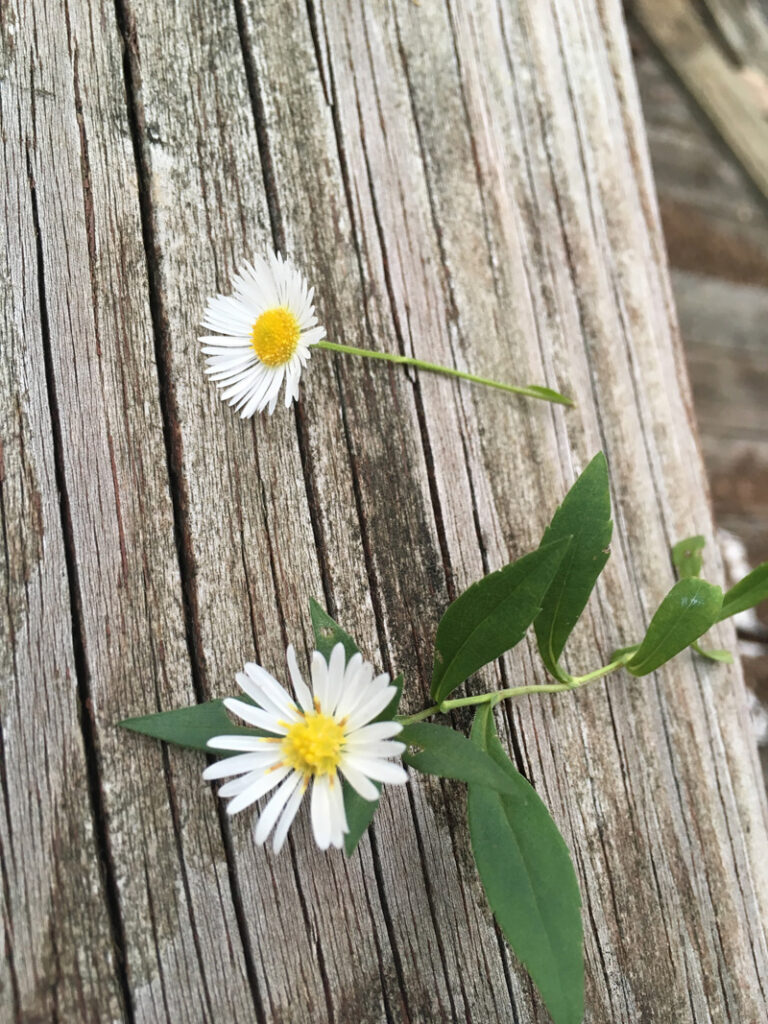
Looking at the two specimens above, it is clear that these are different flowers. The “scraggly” attribute I’d noticed was only in comparison to the much neater fleabane. The stem was leafier and the disc much fluffier. But how to identify a nondescript, white-flowered weed? It took a number of deep searches to find out. Finally, it became clear that I was looking at Heath Aster.
Daisy Fleabane blooms for much of the summer in the midwestern parts of North America. This brings it into contact with Heath Aster, an unrelated native plant whose flowers are similar but only appear in late summer. In fact, in its white petals, yellow disc, tall growth habit and exuberant abundance, this impostor can easily be mistaken for Daisy Fleabane.
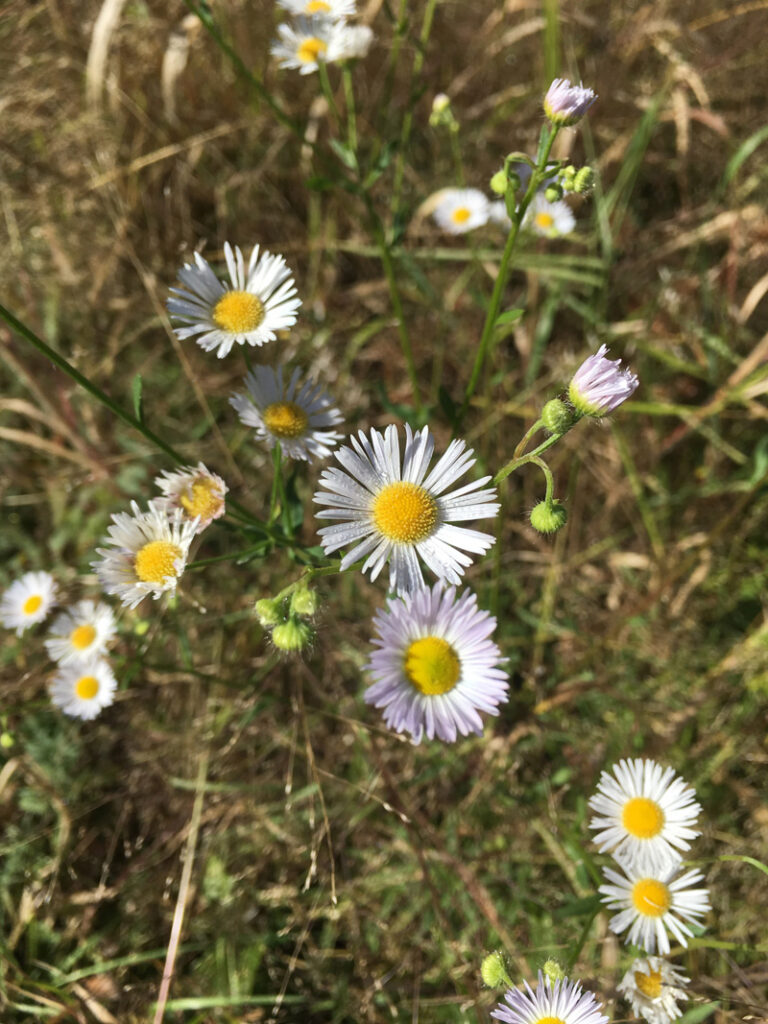
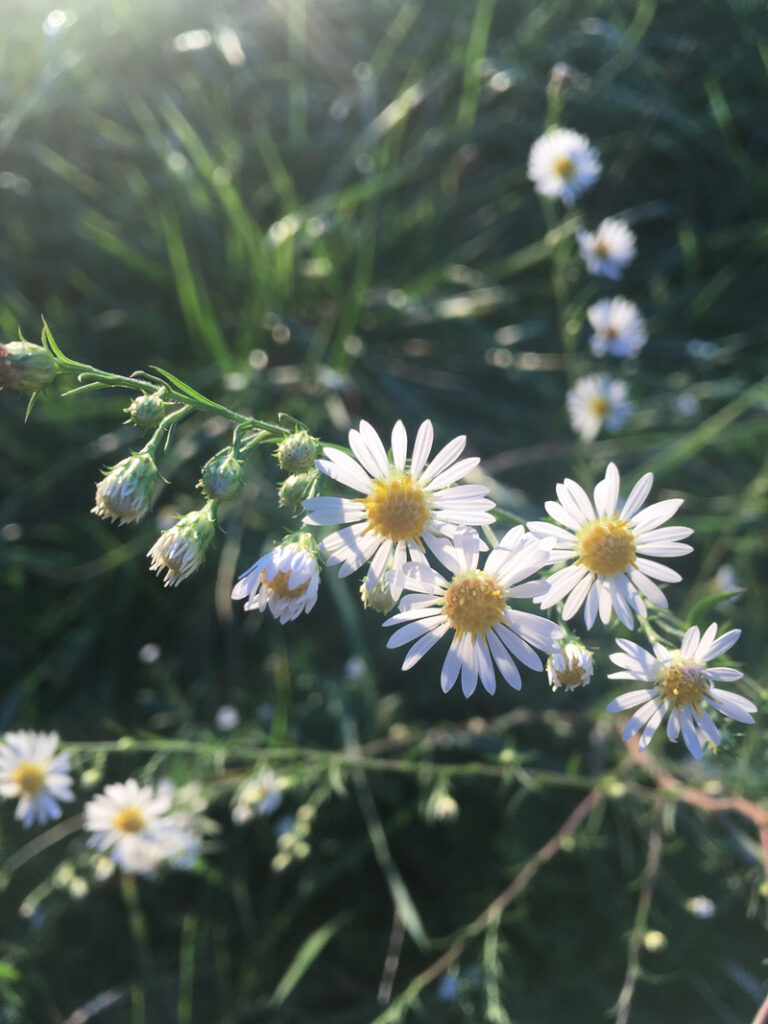
Both flowers have similar vase life and can fulfill a similar supporting role in a wild bouquet. As the summer gradually falls away, you might find yourself unknowingly transitioning from fleabane to aster, and appreciating its slightly unkempt appearance as a harbinger of the season to come.
White Heath Aster flowers are said to take on a slightly bluish appearance as the weather grows colder. Here, we see a stand in a forest clearing, and it appears to have taken on this appearance.
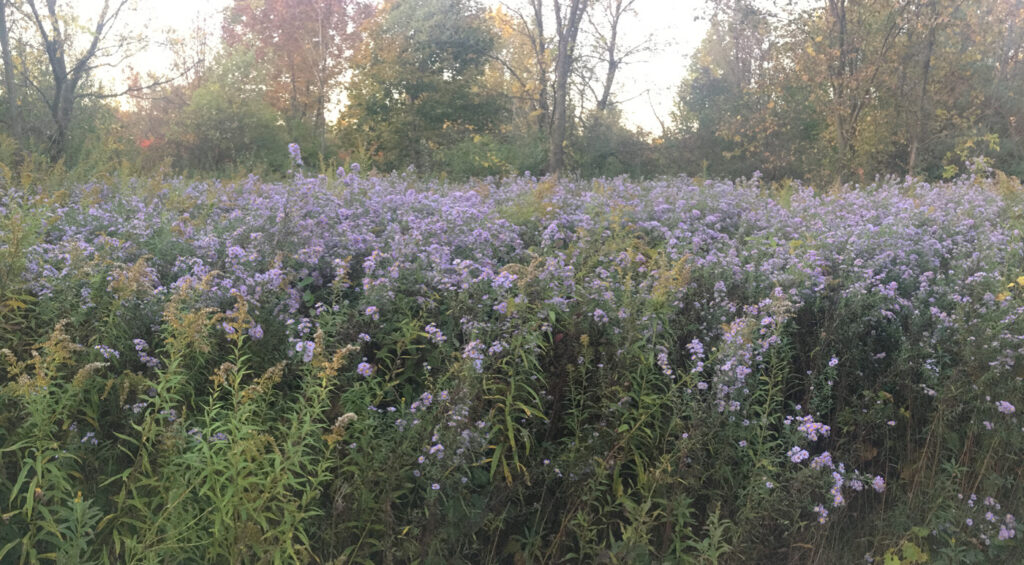
But is this really White Heath Aster that has shifted to blue? Looking closely, each flower indeed has a distinct bluish tint, but I’m not sure that these flowers were ever as white as those we mistook for Daisy Fleabane. This stand is so large that I would have noticed it much earlier if it had been brilliant white; its bluish tint makes it subdued enough that I never really noticed this impressive stand until I went out looking specifically for more asters.
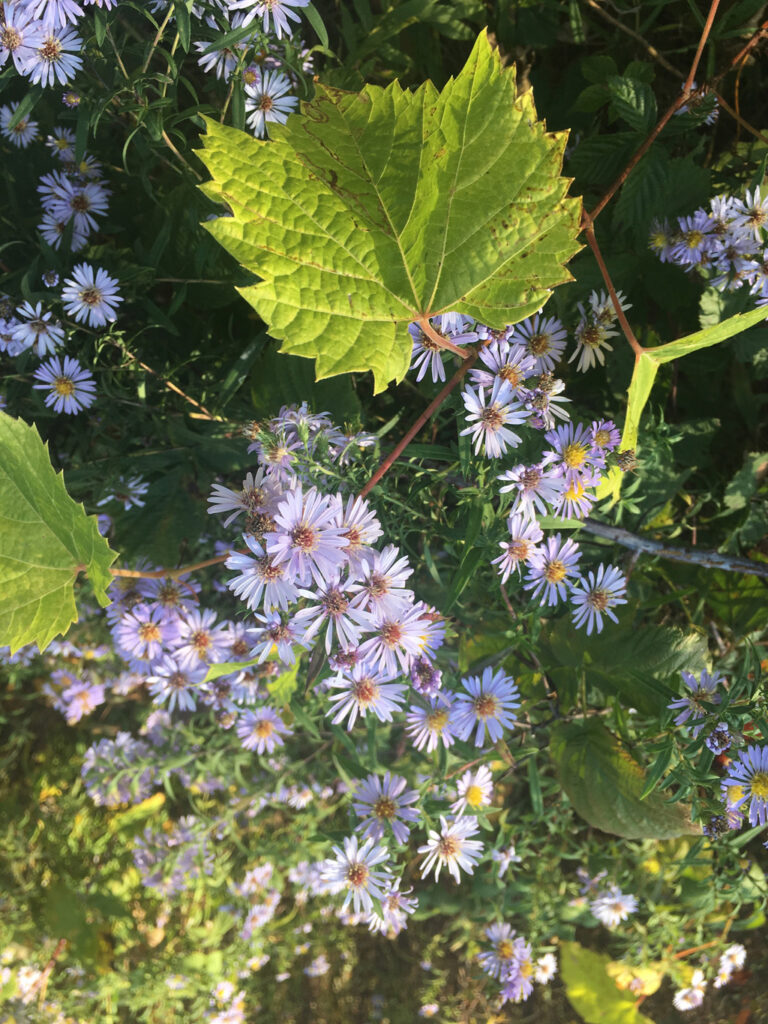
There does exist a variety called Sky Blue Aster, but I’m not sure if this is blue enough to qualify. Perhaps the heath aster has many subtle color variations, and this is one of them? As is true of the internet in general, I was able to find corroboration of this opinion, as well as corroboration of the opposite opinion that it is a color change that occurs in response to cold. I’d ask out loud in case anyone can shed more light on this question, but then, it would just be another opinion on the internet, wouldn’t it?
